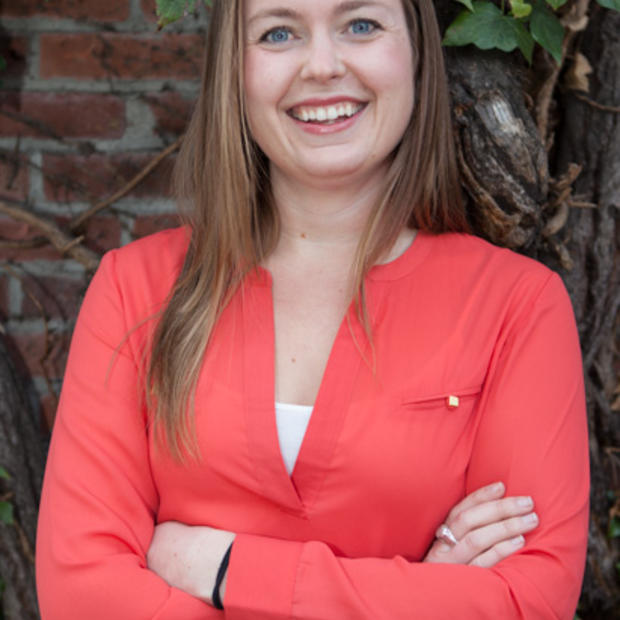When EPA Administrator Lisa Jackson visited Seattle last month for a talk at UW’s graduation, there was one visit she and her staff weren’t interested in promoting. On Saturday morning, just before the graduation, she and a few of her staffers made an unpublicized stop at 15th and Madison. (The low profile was to avoid distracting attention from her graduation speech.)
Despite a June Seattle drizzle that left her shivering, Jackson’s warm demeanor shone through as she gave a big hug to the obviously smitten daughter of EPA Policy Advisor Bill Dunbar. In the midst of a flurry of introductions, someone handed her a hard hat and she began a tour of Capitol Hill’s big new green energy star: the Bullitt Center.
It’s not hard to see why Jackson would be interested in the Bullitt Foundation’s still under-construction office building. Once completed, it will be the greenest commercial building in the world – the only so far to attain Living Building status. The Bullitt Foundation, founded in 1952 with money from the Bullitt family's KING Broadcasting properties, is devoted to protecting and restoring the environment in the Northwest.
The Bullitt Center will produce all of its own energy through a large photovoltaic array on its roof, capture and treat rainwater on-site to supply everything save drinking water, and even compost human waste using bins in the basement. Where a standard commercial building might last about 40 years, the Bullitt Center is built to last 250.
“The creation of the Bullitt Center is a response to the [carbon] impact of buildings,” the foundation explains on its website, “which currently account for an estimated 39 percent of carbon dioxide emissions, 65 percent of waste and 70 percent of electrical use in the United States.”
It’s an ambitious project by any standards, but perhaps most exciting is the ripple effect it has had on the market for building materials. To qualify as a Living Building, the Bullitt Center must adhere to a long list of guidelines, including creating all of its own energy and water. (Due to state law, drinking water must still be piped in, but the team hopes they might one day be able to filter their own drinking water on-site as well.) Construction of the building has also banned 14 types of chemicals; namely carcinogens, endocrine disrupters and other chemicals known to be ecologically harmful.
Joe David is a Project Associate with Point 32, the company behind the Bullitt Center’s development. David has spent hours conducting recon on building materials for the center – including something called an applied air barrier. “It’s kind of like the rain jacket for the building,” David explains.
But when he spoke with Prosoco, the company that manufactured the “rain jacket” he wanted, he learned the product was made with phthalates, which studies have linked to damage of the liver, kidneys, lungs, and reproductive systems. Earlier this month, phthalates reared their head once again as a headache for plastics manufacturers, when a study found they were also linked to diabetes. For David and the Bullitt Center, it was a deal breaker.
That is until he got a call back from the company a few weeks later. “After a few conversations, the manufacturer called us back and said, ‘We think we can reformulate the product so that it doesn’t have any red-list chemicals,’” he says. The Bullitt Center will be just one of many buildings to include the reformulated sealant: Prosoco was so horrified to learn about the effects of phthalates, they plan to use it in all of their products going forward.
“We’ve also been able to make a number of other substitutions with manufacturers’ help to get rid of things like neoprene and PVC,” adds David.
Finding workarounds for these kinds of banned chemicals will mean a cleaner, healthier work space for the Bullitt Center’s tenants – who so far include the Bullitt Foundation, which will occupy a half floor of the 6-story building, the International Living Future Institute, and the UW Integrated Design Lab. That still leaves three and a half floors to fill by January of 2013, when tenants will be able to move in.
The $30 million Center will run about $350 a square foot in construction costs finished – about $50 more per square foot than your typical commercial building. Still, tenants will have free water and electricity – so long as they stay within their allotted share. Eventually, the Point 32 team hopes the legwork they’re doing will lower costs and barriers for future developers with the green building bug.
So far though, the Bullitt Center is still the only building under construction in Seattle’s Living Building Pilot Program, which was inspired by a meeting between Bullitt Foundation President and CEO Denis Hayes, Point 32 Owner Chris Rogers, who oversaw development of the Seattle Art Museum's Olympic Sculpture Park, and Seattle’s Director of Planning and Development, Diane Sugimura. The program has seen controversy recently over the height of the proposed Skanska building at 34th and Fremont.
And EPA'S Lisa Jackson? Her Seattle visit was just one stop on a nationwide survey of innovation in clean energy. Though she might not admit it, it’s not hard to imagine how a visit to the Bullitt Building might be uplifting after spending so much time being pummeled by Members of Congress suspicious about any added environmental regulation.


